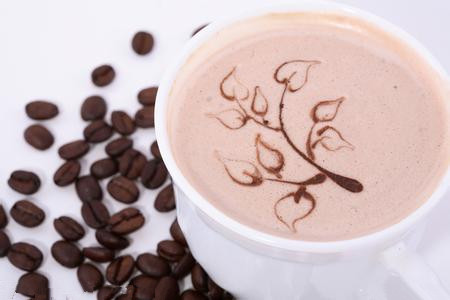Techniques for grinding coffee beans: grinding, grinding, mortar grinding

There are three kinds of grinding methods for coffee beans: "grinding", "grinding" and "mortar grinding".
There are three kinds of grinding methods for coffee beans: "grinding", "grinding" and "mortar grinding". 1. Grinding: two rotating parts are used to squeeze and crush coffee beans. The grinding parts can be disc-shaped or conical. Conical machines are less noisy and less likely to block. The coffee powder produced by the grinding method is more uniform and the taste is more consistent when cooking. The design of the conical grinding disc reduces the required speed, which is generally less than 500 revolutions per minute. The slower the grinding speed, the less heat generated by friction, so the aroma of coffee is not easy to lose. By adjusting the grinding parameters, the cone grinder can be used for the preparation of different kinds of coffee. A better machine can grind the ultra-fine powder needed for Turkish coffee. Disc grinders generally have higher rotational speed and generate more heat, but they have a wide range of functions, economical and practical, and are suitable for the preparation of most household coffee.
two。 Polish:
Most modern machines actually cut coffee beans into pieces at a speed of 20, 000 to 30, 000 revolutions per minute (some people simply use beaters). The consumption of this kind of blade grinder is longer, but the accumulated heat in the grinding and the uneven size of the coffee chips make it difficult to produce high-quality drinks. In theory, this kind of grinder can only be used for drip coffee pots. The dust they produce can clog the filters in espresso and French press machines.
3. Molar mill:
If you can't find good grinding equipment, all you can do is to use a pestle and a mortar to slowly enjoy the fun of labor.
(this article is reprinted)
Important Notice :
前街咖啡 FrontStreet Coffee has moved to new addredd:
FrontStreet Coffee Address: 315,Donghua East Road,GuangZhou
Tel:020 38364473
- Prev

A suggestion on the preservation of raw beans the preservation of raw coffee beans is generally affected by the following
The preservation of raw coffee beans is generally affected by the following: 1) the water content of raw coffee beans, 2) the temperature of the surrounding environment, 3) relative humidity, the water content of the coffee bean itself: about 10-11% water content is our general understanding of a batch of good raw beans, but where does this number come from? What is its credibility? Kenya did an experiment on this, in a room of 10-35 degrees Celsius.
- Next

The relationship between the Grinding degree of Coffee Powder and the method of extraction what is the scale of hand grinding powder?
Suitable for fineness grinding Turkish copper pot (Ibrik, fine powder), mocha pot, espresso machine (very fine grinding). Suitable for medium grinding filter paper dripping method, flannel dripping method, plug air kettle. Suitable for roughness grinding water drop coffee machine (extremely coarse grinding), drip filter coffee machine suitable for fine grinding Turkish copper pot (Ibrik, fine powder), mocha pot, espresso machine (very fine grinding)
Related
- Guji coffee producing area of Guji, Ethiopia: Humbela, Shakiso, Wulaga
- What is the most expensive variety of Qiloso in BOP multi-variety group?
- How to store the coffee beans bought home?
- Why are Yemeni coffee beans so rare now?
- Ethiopian Sidamo all Red Fruit Sun Sun Santa Vini Coffee beans
- SOE is mostly sour? What does it mean? Is it a single bean? what's the difference between it and Italian blending?
- Is Italian coffee beans suitable for making hand-brewed coffee?
- How to choose coffee beans when making cold coffee? What kind of coffee beans are suitable for making cold coffee?
- Just entered the pit to make coffee, what kind of coffee beans should be chosen?
- Can only Japan buy real Blue Mountain Coffee? What are authentic Jamaican Blue Mountain coffee beans?

